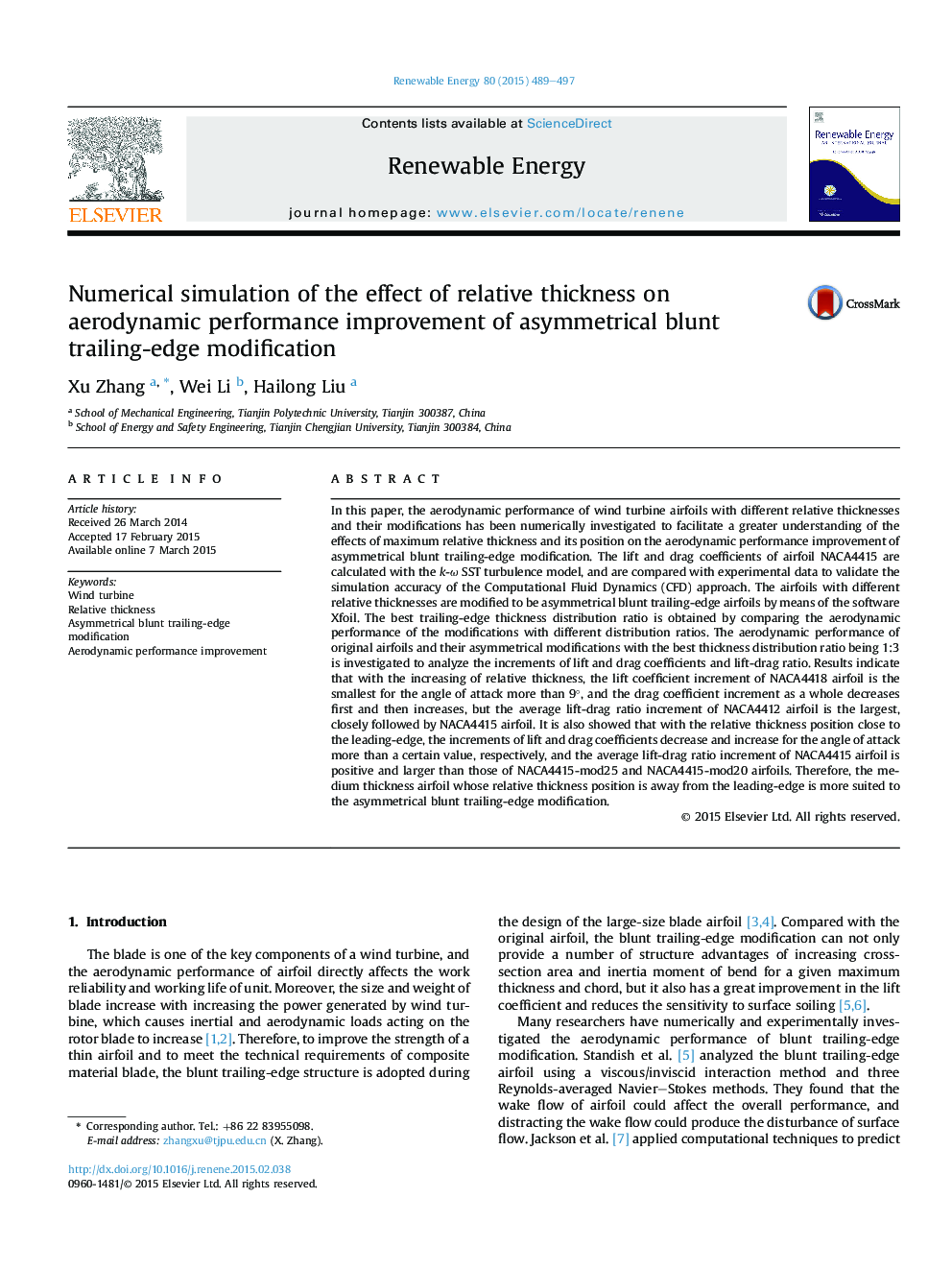| Article ID | Journal | Published Year | Pages | File Type |
|---|---|---|---|---|
| 6767430 | Renewable Energy | 2015 | 9 Pages |
Abstract
In this paper, the aerodynamic performance of wind turbine airfoils with different relative thicknesses and their modifications has been numerically investigated to facilitate a greater understanding of the effects of maximum relative thickness and its position on the aerodynamic performance improvement of asymmetrical blunt trailing-edge modification. The lift and drag coefficients of airfoil NACA4415 are calculated with the k-Ï SST turbulence model, and are compared with experimental data to validate the simulation accuracy of the Computational Fluid Dynamics (CFD) approach. The airfoils with different relative thicknesses are modified to be asymmetrical blunt trailing-edge airfoils by means of the software Xfoil. The best trailing-edge thickness distribution ratio is obtained by comparing the aerodynamic performance of the modifications with different distribution ratios. The aerodynamic performance of original airfoils and their asymmetrical modifications with the best thickness distribution ratio being 1:3 is investigated to analyze the increments of lift and drag coefficients and lift-drag ratio. Results indicate that with the increasing of relative thickness, the lift coefficient increment of NACA4418 airfoil is the smallest for the angle of attack more than 9°, and the drag coefficient increment as a whole decreases first and then increases, but the average lift-drag ratio increment of NACA4412 airfoil is the largest, closely followed by NACA4415 airfoil. It is also showed that with the relative thickness position close to the leading-edge, the increments of lift and drag coefficients decrease and increase for the angle of attack more than a certain value, respectively, and the average lift-drag ratio increment of NACA4415 airfoil is positive and larger than those of NACA4415-mod25 and NACA4415-mod20 airfoils. Therefore, the medium thickness airfoil whose relative thickness position is away from the leading-edge is more suited to the asymmetrical blunt trailing-edge modification.
Keywords
Related Topics
Physical Sciences and Engineering
Energy
Renewable Energy, Sustainability and the Environment
Authors
Xu Zhang, Wei Li, Hailong Liu,
